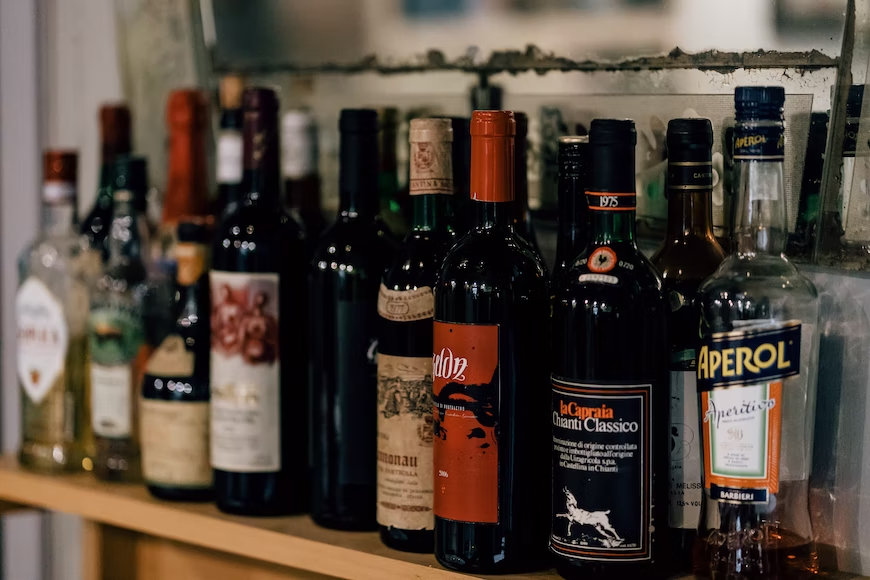When discussing different types of amari its important to remember that amaro is currently not regulated. Some producers are petitioning to have a D.O.P, denominazione di origine protetta (protected designation of origin) added to amari, similar to wines and cheese, but right now none exists. There are no strict classifications for different types of amaro. But certain distinctions can be made based on the ingredients used and the flavor profile of the amaro.
Most often the term ‘Amaro’ refers to digestivos (or digestif) although aperitivos (or apertif) also fall into the category.
Apertivos (aperitif)-
- Brightly colored
- Lower alcohol (11-24%)
- Usually mixed
- Drier, more citrus
- Drunk before meal
Digestivos (digestif)-
- Darkly colored: amber-onyx
- Higher alcohol (16-40%)
- Typically drunk neat though mixing is also common
- Sweeter than apertivos
- Drunk after meal
Below is an incomplete list of amari types to be used as a guide for discussing and organizing amari.
- Light - light in color and bitterness. Usually low alcohol, hints of caramel, citrus, botanical.
- Medium - darker in color. Higher bitterness. Can be more or less sweet depending on the producer. Overall more powerful flavor profile than the light.
- Carciofo - artichoke based. Mild to strong vegetal tones. High bitterness.
- Alpine - produced in northwestern Italy (Lombardy/Piedmont) lighter in body. Less sweet/citrus. More herbal/medicinal.
- Rabarbaro - also from northwestern Italy, infused with Chinese rhubarb, native to Italy since the 17th century. This amari is cloudy, smoky, vegetal, ebony-colored, bitter yet sweet and balanced.
- Fernet - very bitter. High alcohol. Thinner bodied. Very medicinal/herbal. Aloe Ferox is typical base infusion. Fernet-Branca most well known.
- Apertivos - have their own category of amari. Usually more bitter than digestifs, brightly colored (orange, red, yellow), high citrus, super dry,
- Vermouth Amaro - these amari differentiate from wine-based amari in that they are fortified (add alcohol) to a lower proof (around 16%) making it more of a vermouth than a typical amaro. This process also makes it necessary to refrigerate.
Some Popular Amari by Category
Light
- Montenegro
- Amaro Nonino
- Averna
- Cardamaro
- Nardini amaro
Medium
- Ramazzotti
- Lucano
- Vecchio del capo
Carciofo
- Cynar
- Amaro Carciofo
- Don Ciccio & Figli C3 Carciofo
■ (Side note) Cardamaro is named after it’s base infusion of Cardoons (not cardamom). Cardoons and blessed thistle are both relatives of the artichoke but not close enough to be included in this category.
Alpine
- Braulio
- Amaro Alta Verde
Rabarbaro
- Cappelletti Sfumato
- Zucca Rabarbaro
Fernet
- Fernet Branca
- Branca Menta
- R. Jelínek Fernet
- Luxardo Fernet
- Fernet Vittone
Apertivos
- Galliano
- Galliano Apertivo
- Aperol
- Campari
- Strega
- Cappelletti
Amaro Vermouths
- Punt e Mes
- Cocchi Dopo Teatro
Amari producers in Italy argue that in order to be a true amaro it must be from Italy. Though without any formal structure or legal regulation there is nothing preventing manufacturers of bittersweet, alcoholic beverages from other European nations, inculding the United States, from classifying their products as amaro.
A few examples of arguably amaro from countries outside Italy:
* Chartreuse
* Jaegermeister
* Underberg
* Sauze
* Malort
* Benedictine
* Don Ciccio & Figli C3 Carciofo
* Fernet Francisco
